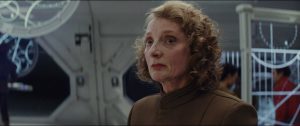Yesterday I discussed the ten things that, in my opinion, Amazon Prime’s The Lord Of The Rings simply can’t do without: Blue Wizards, a cohesive tale of Galadriel and Celeborn, dark thematic material…these are the essential building blocks that Amazon can and should use to construct their unique take on Middle-earth. So how about the ten things that they should never do?
Well, before we get into the list, let me remind you all that Amazon’s series isn’t a straight-up adaptation of The Lord Of The Rings, the classic best-selling novel. Instead, it’s based on the tantalizing hints, references and scraps of unfinished stories about the Second Age of Middle-earth, a time period in the world’s history when Sauron, Dark Lord of Mordor, first rose to power with the help of the One Ring. That being said, Sauron isn’t the only thing you’ll find in this new adaptation that will be reminiscent of previous books, films and video games: characters like Galadriel, Elrond and Glorfindel will all presumably make appearances; locations like Rivendell, Mount Doom and Moria will be visited; events like the War of the Last Alliance and the forging of the Great Rings will be witnessed.
With that out of the way, let’s get to my list.
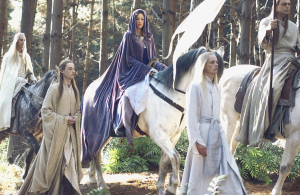
10: Sorrowful Elves. It’s important to remember that the Second Age ends about three-thousand years prior to Frodo Baggins’ quest at the very end of the Third Age. A lot of stuff happens in between those two points – including the events that cause the Elves to begin their slow decline into sorrow and grief. At the start of the Second Age, however, we should see the Elves in their heyday: a happy, peaceful people with a flourishing culture, working to rebuild after the traumas of the First Age. That means characters like Elrond, best known for being grim and dour, are going to be cheerful, bright and optimistic in the Amazon series; wise, experienced leaders like Galadriel will still be learning, growing, and making mistakes; aged, brooding wise men like Círdan…well, he’ll still be an aged, brooding wise man, but the rest of them will be different. This doesn’t necessarily mean that they should be singing “tra-la-la-la-lally,” but at the same time it doesn’t necessarily mean that they shouldn’t be, either.
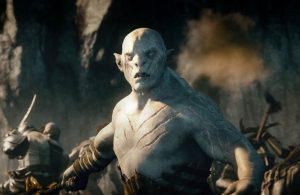
9: A Reliance On CGI. I’m flexible on this issue: on the one hand, I think CGI is an essential element in the making of any fantasy world, and particularly Middle-earth, and I definitely wouldn’t discourage Amazon from using it in many of the same ways Peter Jackson did in his original trilogy (to build fantastical locations, digitally construct armies, certain creatures, etc); but on the other hand, I’d counsel them not to rely on special effects as much as Jackson did with The Hobbit films – practical effects, real location shoots, physical props and sets: for the most part, these can do the job just as well as green-screens and digital wizardry.
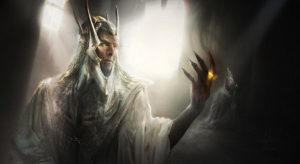
8: A Fully Evil Sauron. It would be almost ridiculously easy to depict Second Age Sauron as a purely evil character, but that’s not the Sauron I want to see. Tolkien wrote that, in the beginning, Sauron was a perfectionist, whose plans for Middle-earth were ambitious, but no more evil than those of any reformer’s. He eventually grew to be a tyrant, thinking that Elves and Men could only flourish if they relinquished their own free will and submitted to his rule. Sound familiar? Yeah, that’s because the Sauron of the Second Age has more in common with the Marvel Cinematic Universe’s trickster god Loki (one of the most popular villains there is) than with the flaming eye of Peter Jackson’s films. Sauron, in fact, tried to do good – but his fate had been decided long before, when he turned away from the teachings of Eru and began learning from the devilish Morgoth, whose evil teachings Sauron implemented in his own plans. Amazon could do some amazing things with that storyline.
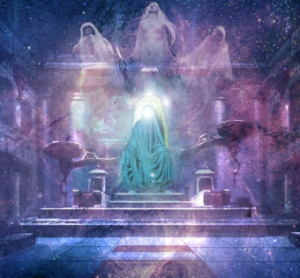
7: Eru. Speaking of Eru, it’s about time I addressed him. In my last post, I said it would be a mistake to leave the Valar (Middle-earth’s pantheon of gods) out of the series, and I stand by that. But there’s one god I never want to see take a physical form in The Lord Of The Rings, and that’s Eru Ilúvatar, the One Above All. Eru is the highest, mightiest being in all of Tolkien’s legendarium – his song set all of history into motion; his plan is the divine plan, which cannot be undone by any design of Morgoth’s or Sauron’s; near the end of the Second Age, he intervenes one last time in the affairs of the world, reshaping the earth into a globe (it was flat previously), and sending the country of Númenor to the bottom of the sea. But though that means he’ll probably be brought up frequently in conversation, he shouldn’t ever be seen; at most, he should be a voice, but even that feels wrong. Eru is incomprehensible, on a plane of existence higher than any of our protagonists should be able to understand. Keep him offscreen. Leave the mystery intact.
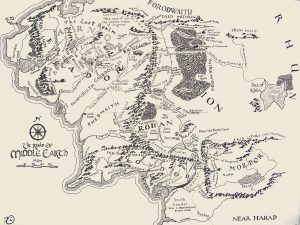
6: Whitewashing. The fantasy genre already has a problem with diversity – series like Game Of Thrones employ one or two people of color in lead roles over the course of several seasons, and the few exceptions to the rule, such as The Witcher, get viciously attacked by an online community that resorts to the same tired excuses for why people of color are simply unthinkable in worlds filled with dragons, elves, orcs and wizards: it’s unrealistic because fantasy worlds are Euro-centric and Europe obviously never had any racial diversity; race-bending white characters is wrong because people of color need to write their own stories if they want to see themselves represented in mainstream media (but whitewashing characters of color is somehow okay?); Tolkien came from a different time period, and the series should reflect that by not having people of color, who clearly didn’t exist forty years ago. The cast of Lord Of The Rings currently includes a handful of people of color – but only fifteen actors have been cast so far, and I hope to see the number increase as more come onboard the project. I want to see Amazon take advantage of the amazing opportunity they have, and use their platform to hire talent of many different ethnicities – not to mention genders, sexual orientations and ages.
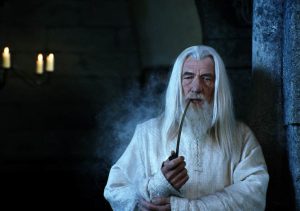
5: Gandalf. Gandalf the Grey, along with his partners Saruman and Radagast, were both sent to Middle-earth in the Third Age: to be the enemies of Sauron in that age, and that age alone. They didn’t witness any of the events of the Second Age, and they had never fought Sauron before the attack on Dol Guldur as depicted in The Hobbit; if they had, Gandalf would likely have been able to recognize the One Ring immediately, and Saruman might never have been deceived by Sauron’s lies. Having them arrive earlier in the timeline would be a very bad move – yet people continue to mistakenly assume that Gandalf is either going to be a major character, or a female lead, of the upcoming series. To avoid further confusion, I hope Amazon gives the series an official title soon that differentiates it from The Lord Of The Rings, which immediately brings to mind images of Gandalf and hobbits.
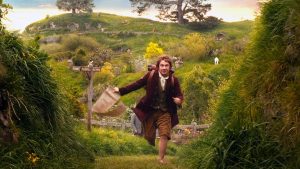
4: Hobbits. Allow me to clarify: hobbits did exist in the Second Age, even though they are only recorded in the Third Age and later. But these hobbits (a) dwelt only in Wilderland east of the Misty Mountains, and not in the Shire, and (b) had no impact on Middle-earth’s history at this time. Most importantly, there should be no interaction between Sauron and the hobbits: he, above all others, should never hear of them or even be aware that they exist. Why? Because the whole reason Frodo’s quest succeeds in The Lord Of The Rings is because Sauron (like Smaug before him) had never dealt with hobbits before. They were the unforeseen heroes of the Third Age, who “suddenly became, by no wish of their own, both important and renowned, and troubled the counsels of the Wise and Great.” So, Amazon: if you want to throw in some hobbits, put them in at the very end of the entire series, during the disaster of the Gladden Fields, when such an appearance might make sense. No sword-wielding hobbit heroics in the Second Age, please.
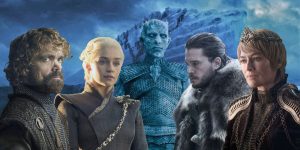
3: Game Of Thrones. Now, I’m not totally opposed to the series being more mature than the adaptations we’ve seen before: Tolkien’s world definitely isn’t grimdark or gritty, but the Second Age is a time of decadence, vice, violence and horrific evils (including, but not limited to, hundreds upon thousands of human sacrifices). So when I say I don’t want The Lord Of The Rings to be Game Of Thrones, I’m not necessarily saying it shouldn’t include violence (I refer you back to the human sacrifices), sexuality, and/or mature themes. I’m saying it should never revel in these things or use them for shock value, as Game Of Thrones was often accused of doing. So no, I don’t want to see violence against women used to subvert expectations; I don’t want to see nudity used to make exposition-heavy dialogue “more interesting” or whatever the excuse was; I don’t want to see fan-favorite characters get brutally murdered just to prove a cynical point. Tolkien’s world is one where hope survives even against immeasurable odds, where light endures in the darkest situations, where heroes are…for the most part…heroic. George R.R. Martin’s world is bleak, pessimistic, and, at least in the TV series, there is no end to its cycle of death, defeat and petty power struggles. That’s not bad: it’s just not Tolkien.
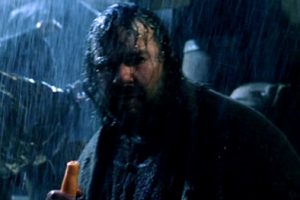
2: Incessant Callbacks. Often, a prequel to some successful film franchise (such as…oh I don’t know, The Hobbit) fails in part because it never tries to be its own thing: instead, with the help of callbacks, references and hints, it simply serves to remind viewers to go check out another, usually better, film or TV property that came before it. Using The Hobbit as an example: remember the really weird shout-out to Aragorn in The Battle Of The Five Armies that makes no sense, considering Aragorn was a ten year-old during the time of that film? Or how they refer to the recently drowned Master of Lake-town as being “half-way down the Anduin” when there’s no conceivable way he could ever have gotten there from the Lake of Esgaroth, as shown by their own maps? How about that bizarrely contrived scene where Legolas learns about Gimli sixty years before ever meeting him? These things serve no purpose in The Hobbit, except to remind us that, yes, we are still watching a prequel to The Lord Of The Rings, as hard as it is to believe. Amazon doesn’t need to make that mistake: focus on telling a good story first, then weave in some subtle foreshadowing or evocative parallels later (also, for the love of Eru, choose better callbacks: one reason why those in The Hobbit fail is because they’re calling back to the weirdest things – athelas? Peter Jackson’s carrot-eating cameo? Why were these things necessary?)
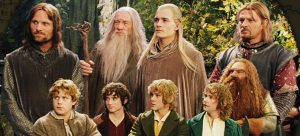
1: Strictly Movie Canon. We know that Amazon wants to maintain some level of continuity with the classic Peter Jackson trilogy, and at one point they even approached Jackson – either for his help as a consultant, or simply for his blessing. It makes sense: Jackson defined Middle-earth with his award-winning, critically-acclaimed, hugely successful three-film magnum opus. He and his team are widely viewed as experts when it comes to worldbuilding of any kind. But there’s no need for Amazon to feel beholden to his specific vision of Middle-earth: while his is certainly the most iconic, it wasn’t the first, not will it be the last. Amazon should feel free to branch out, to use the books more frequently as source material than the movie, and along the way to establish their own unique take on Tolkien’s world. Let’s not forget: Peter Jackson has broken his own canon on occasion – Bilbo’s encounter with Gollum in the prologue of The Fellowship Of The Ring is completely different to the same scene in An Unexpected Journey: different actor, different scenery, set design, clothing design, everything. Amazon should be able to do that too.
So what do you think of my list? Do you disagree with my picks (it’s worth remembering that I’m a pretty positive person, so it was hard for me to even think of ten things I didn’t want to see)? Share your own thoughts, theories and opinions in the comments below!
